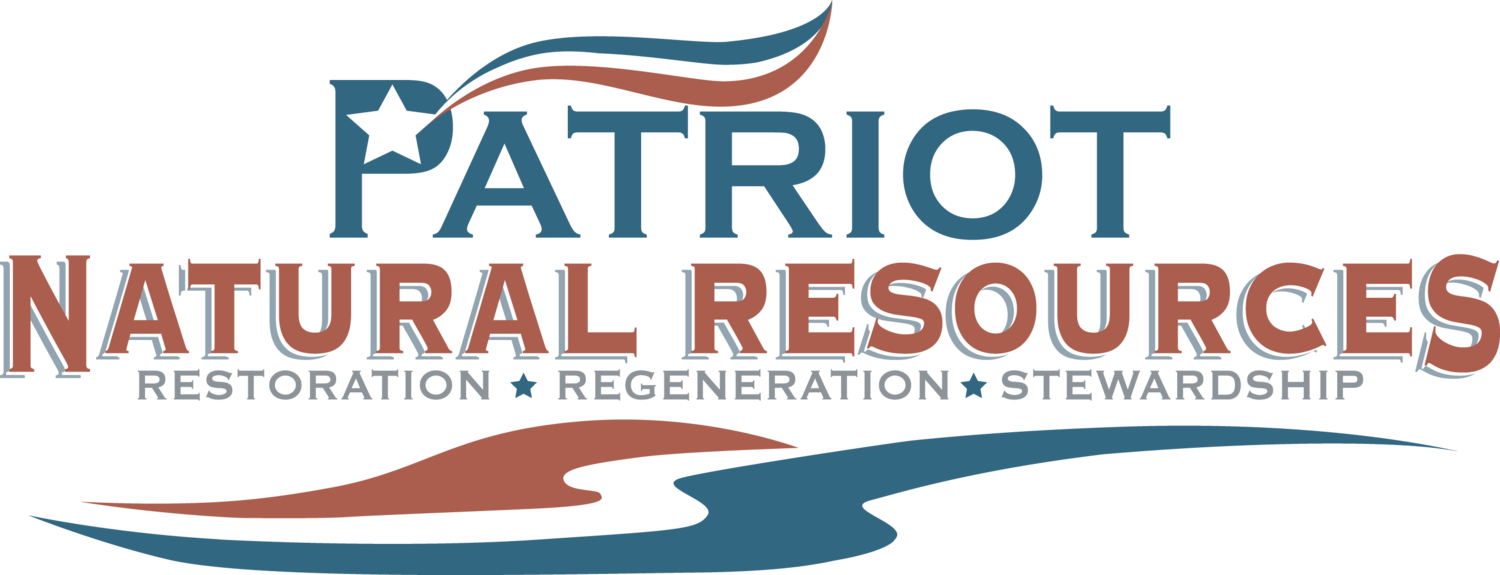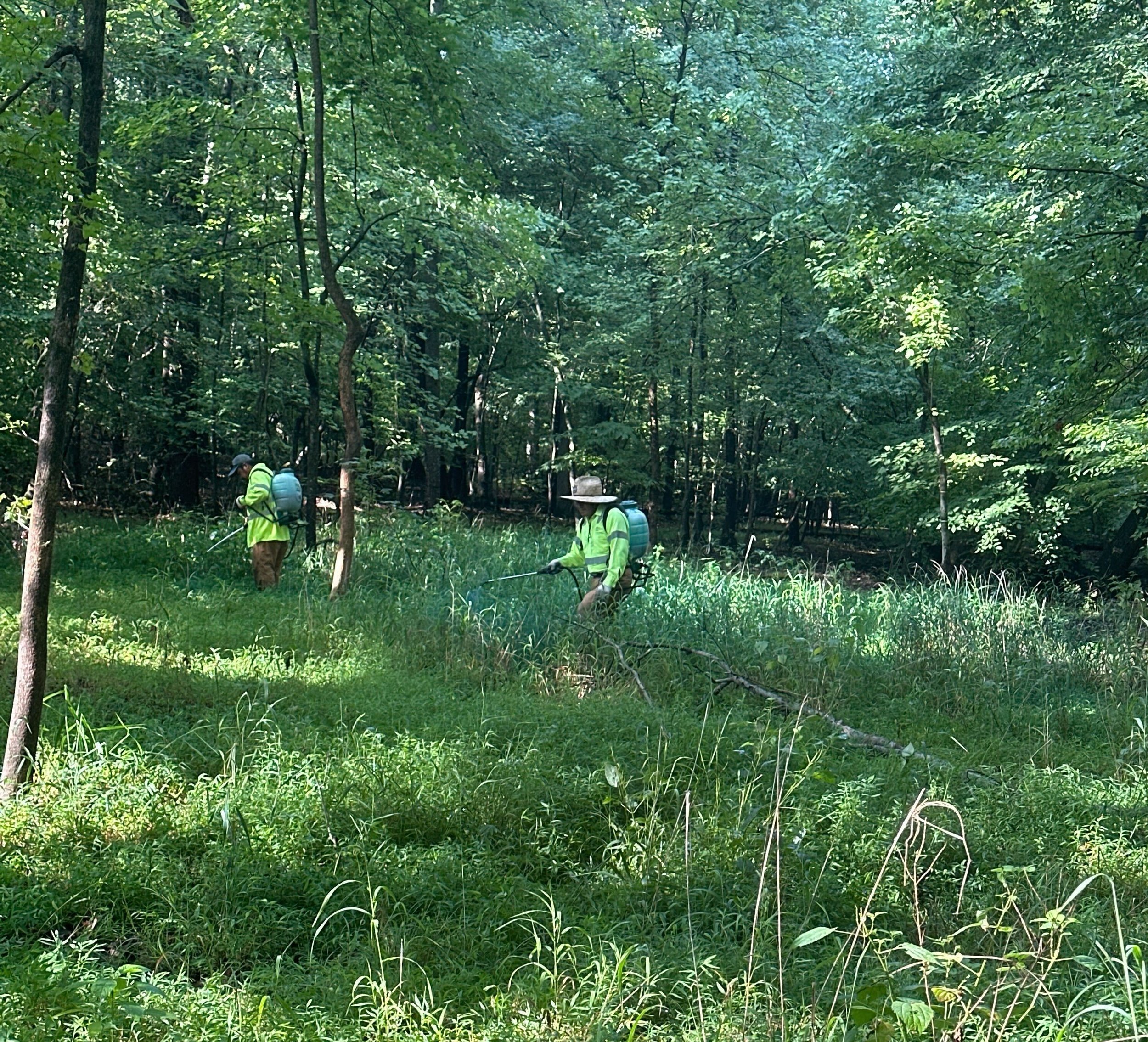Non-Native Invasive Plant Species in Maryland Forests: A Brief Overview for Property Owners, HOAs, and Park Managers
Maryland’s forests are vital ecosystems that support wildlife, protect water quality, and provide natural beauty for communities. However, the health of these forests is increasingly threatened by non-native invasive plant species. These plants outcompete native vegetation, degrade habitats, and disrupt ecological balance, making their management a priority for property owners, HOAs, and park managers tasked with forest stewardship.
This article highlights specific invasive plant species commonly found in Maryland forests and explains why their control is essential to preserving these valuable ecosystems.
What Are Non-Native Invasive Plants?
Non-native invasive plants are species introduced to Maryland from other regions or countries that spread aggressively and disrupt local ecosystems. Unlike native plants, which coexist with other species, invasives often grow unchecked, choking out native vegetation and altering forest structure.
In Maryland, many invasive plants were introduced for landscaping, erosion control, or other purposes but have since escaped cultivation and spread into forests and natural areas.
Key Invasive Plants in Maryland Forests
1. Tree of Heaven (Ailanthus altissima)
• Description: A fast-growing deciduous tree with smooth bark and compound leaves.
• Why It’s a Problem: Tree of Heaven produces chemicals that inhibit the growth of nearby native plants, allowing it to dominate forest edges and disturbed areas.
• Control Methods: Mechanical removal of saplings, careful herbicide application to prevent resprouting, and replanting native trees to restore balance.
2. Japanese Honeysuckle (Lonicera japonica)
• Description: A climbing vine with fragrant white and yellow flowers that turns green year-round in warmer climates.
• Why It’s a Problem: This aggressive vine smothers native shrubs and trees, reducing habitat quality for wildlife.
• Control Methods: Hand-pulling or cutting vines, applying herbicides for larger infestations, and monitoring for regrowth.
3. English Ivy (Hedera helix)
• Description: A climbing evergreen vine commonly used in landscaping.
• Why It’s a Problem: English ivy blankets forest floors and climbs tree trunks, weakening trees and outcompeting native groundcovers. Its dense growth can lead to tree instability and habitat loss.
• Control Methods: Cutting vines at the base of trees, removing ivy from the forest floor, and replacing with native groundcovers like creeping phlox or ferns.
4. Japanese Stiltgrass (Microstegium vimineum)
• Description: A delicate, grass-like plant with narrow, pale-green leaves.
• Why It’s a Problem: This annual grass forms dense mats, outcompeting native plants and reducing biodiversity in forest understories. It spreads rapidly along trails, floodplains, and disturbed areas.
• Control Methods: Hand-pulling before seed production, mowing, and applying pre-emergent herbicides in early spring.
5. Multiflora Rose (Rosa multiflora)
• Description: A thorny shrub with clusters of small white flowers in spring.
• Why It’s a Problem: Multiflora rose forms dense thickets that crowd out native plants and impede wildlife movement. Its seeds are spread by birds, making it difficult to control.
• Control Methods: Cutting and removing shrubs, applying systemic herbicides to prevent regrowth, and planting native shrubs to fill gaps.
6. Garlic Mustard (Alliaria petiolata)
• Description: A biennial herb with heart-shaped leaves and small white flowers.
• Why It’s a Problem: Garlic mustard disrupts soil fungi that native plants rely on, leading to significant declines in native vegetation. It spreads rapidly along forest edges and trails.
• Control Methods: Hand-pulling plants before they flower, bagging and disposing of them to prevent seed dispersal, and monitoring for regrowth.
Why Control Is Critical
1. Protecting Native Biodiversity
Invasive plants displace native species, reducing the diversity of plants, insects, and animals that depend on healthy forest ecosystems. Managing invasives helps preserve the ecological integrity of Maryland’s forests.
2. Maintaining Forest Health
Invasives can weaken trees, reduce soil quality, and create monocultures that lack the resilience of diverse native forests. Proactive management ensures that forests remain healthy and functional.
3. Enhancing Property Value
For property owners, HOAs, and park managers, well-maintained forests contribute to the overall appeal of the land, creating inviting spaces for recreation and enhancing community value.
Steps for Managing Invasive Plants
1. Conduct a Survey of Your Forest Areas
Identify invasive species present on your property and prioritize those causing the most harm.
2. Implement Integrated Management Strategies
Use a combination of manual, mechanical, and chemical control methods tailored to the specific species and infestation level.
3. Replant with Native Species
After removing invasives, replant with native trees, shrubs, and groundcovers to restore habitat and prevent reinvasion.
4. Monitor and Maintain
Regularly inspect treated areas for signs of regrowth and adapt management strategies as needed.
Partner with Professionals for Effective Management
Managing invasive plants in forested areas requires expertise and ongoing effort. Working with a professional team ensures that invasive species are controlled effectively and sustainably.
At Patriot Natural Resources, we specialize in invasive species management and forest stewardship for property owners, HOAs, and park managers in Maryland. From site assessments to restoration planning, we provide tailored solutions to meet your needs.
Contact us today to learn how we can help you preserve the health and beauty of your forests.

